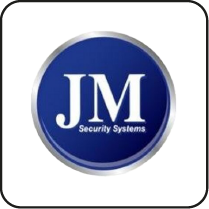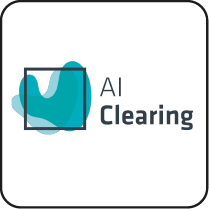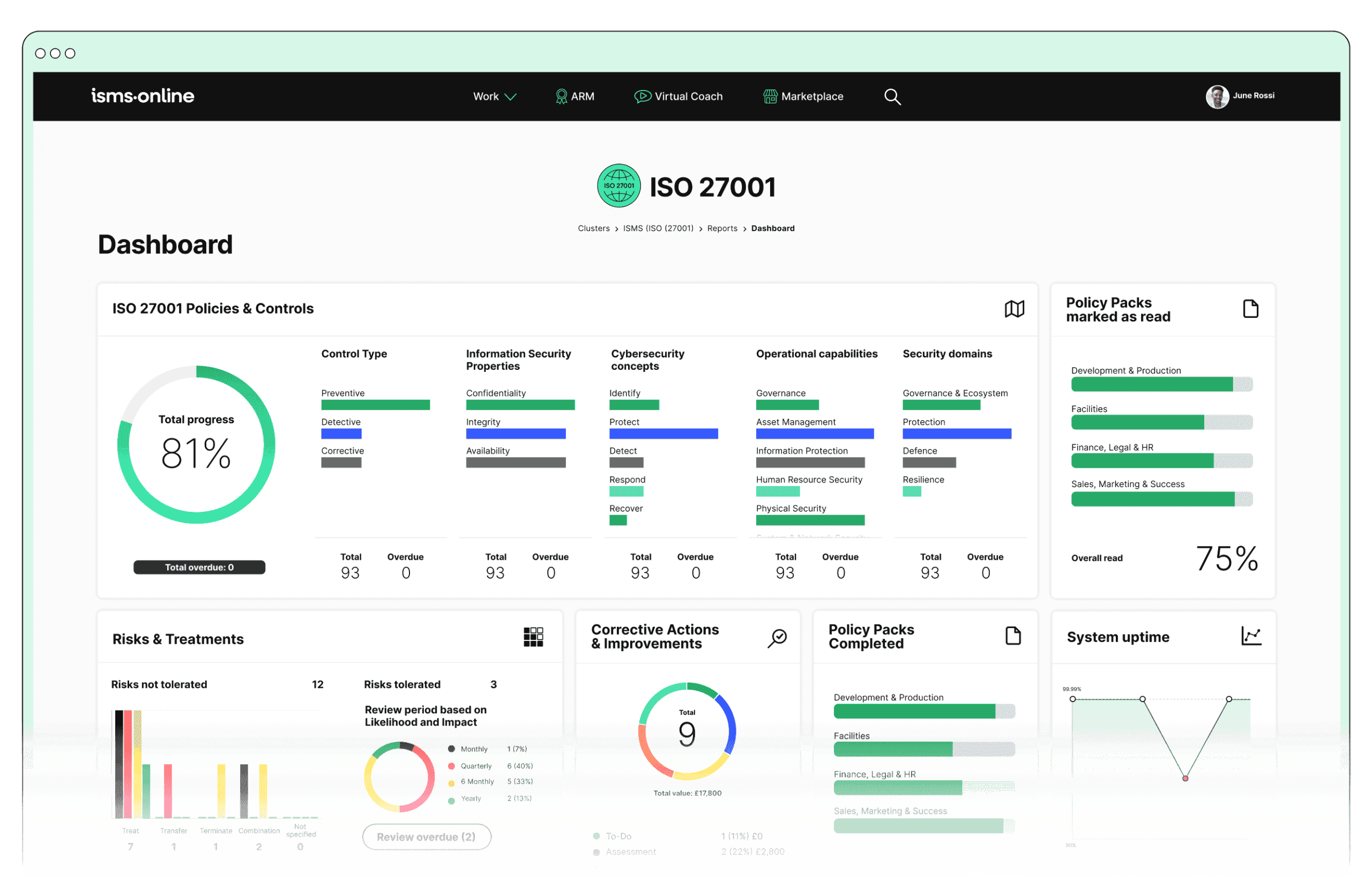What are Subsequent Events in SOC 2
Clarity in Post-Audit Updates
Your auditor expects unmistakable clarity for every adjustment made after the audit window. Subsequent events refer to any changes that occur once the audit period has ended—whether these are modifications to contractual commitments, shifts in operational risk profiles, or revisions in regulatory requirements. Effective control mapping is essential to ensure that every change is captured through a streamlined evidence chain, preserving the integrity of your SOC 2 report.
Defining Post-Audit Adjustments
Immediately upon recognizing a deviation, organizations must isolate and categorize it. This process relies on systems that record every change once the audit period concludes, ensuring that evidence is promptly linked and preserved. Regulatory guidelines set forth specific performance metrics, which help in pinpointing any discrepancies with precision.
Key Components
- Instant Evidence Linking: Every modification is tracked and connected to the related control.
- Materiality Thresholds: Adjustments are prioritized using benchmarks grounded in industry standards.
- Ongoing Control Validation: Continuous checks confirm that operational controls accurately mirror current conditions.
The Imperative for Ongoing Evidence Collection
Neglecting post-audit changes poses serious compliance risks. When even minor discrepancies are overlooked, internal controls may not reflect real operational realities—compromising both efficiency and stakeholder trust. Empirical data shows that organizations maintaining continuous compliance measures reduce oversight errors and ensure audit clarity.
- Reduced Manual Intervention: A streamlined evidence chain minimizes the risk of human error.
- Enhanced Audit Clarity: Precise, timestamped documentation provides strong audit signals.
- Improved Operational Resilience: Promptly addressing every shift in risk exposure ensures that compliance remains robust.
Establishing a system that continually updates evidence converts compliance from a reactive task into an operational advantage. Without such a system, audit preparation becomes manual and risky. Many audit-ready organizations standardize control mapping early—transforming compliance into a measurable and perpetual state of assurance.
Book a demoHow Are Subsequent Events Defined Precisely? – Clarifying the Scope
Operational Definition and Impact
Subsequent events encompass any changes that occur after the audit window concludes, altering the control environment. These events include adjustments to contractual terms, shifts in operational risk, and revisions driven by updated regulatory directives. Every material alteration is pinpointed using clearly defined criteria grounded in regulatory documentation, ensuring that the evidence mapping process remains continuous and precise.
Defining Scope and Materiality
Subsequent events are identified by both their timing and impact. Any operational or contractual change that arises after the audit period—and exceeds a set materiality threshold—is considered significant. This threshold relies on quantitative measures (such as economic or operational variations) and qualitative factors that gauge risk. For example, a minor procedural change may be inconsequential, while a substantial amendment affecting risk exposure would trigger a compliance signal.
Evidence Mapping and Control Integrity
To ensure that every critical change is documented, organizations implement a framework that:
- Integrates historical data with current risk evaluations.
- Establishes precise control triggers to flag deviations that require further analysis.
- Utilizes a streamlined evidence mapping system that continuously records and ties updates to corresponding controls.
This approach transforms compliance efforts from a reactive process into a system of continuous assurance. When controls are actively verified against current operations, your organization minimizes audit-day risks and reinforces overall audit credibility.
Practical Implications and Regulatory Alignment
Consider a scenario where a service-level adjustment necessitates a control review. Regulatory guidelines demand that only changes surpassing explicit risk parameters are disclosed. By employing a system that meticulously tracks such updates, traditional gaps in static reporting are eliminated. This robust alignment between operational controls and evidence tracking ensures that compliance remains an integral, ongoing process—and not merely a checklist exercise.
Without a continuous mapping system, manual interventions introduce significant risk. Many audit-ready organizations now standardize their control mapping early, shifting audit preparation from a reactive burden to a streamlined process that enhances both operational resilience and trust.

Free yourself from a mountain of spreadsheets
Embed, expand and scale your compliance, without the mess. IO gives you the resilience and confidence to grow securely.

Why Do Subsequent Events Impact Report Accuracy? – Assessing Audit Integrity
Operational and Compliance Risks
Your auditor expects that every adjustment following the audit window is clearly mapped in the evidence chain. When post-audit changes—such as modifications to contractual terms or shifts in risk profiles—occur, the control mapping becomes misaligned. Gaps in the evidence chain weaken risk assessments and dilute oversight. Statistical insights show that organizations updating evidence continuously see a notable drop in control discrepancies and achieve stronger alignment with regulatory expectations.
Financial and Reputational Implications
Omitting critical updates skews risk profiles and distorts financial outlooks. For example, if a change in service terms is not recorded immediately, it can misstate risk exposure and lead to financial penalties. Regulatory experiences confirm that even minor delays in evidence updates can incur significant compliance costs. In such cases, outdated audit logs erode stakeholder confidence, magnifying both financial and reputational risks.
Ensuring Precision Through Continuous Evidence Integration
Without a system that streamlines post-audit change capture, reports remain static snapshots that overlook evolving risks. A mechanism that continuously links newly recorded evidence to the appropriate controls maintains accurate control mapping and evidentiary support. This proactive approach minimizes compliance gaps and defends against regulatory penalties. Organizations that standardize their evidence-chain updates frequently shift from reacting on audit day to sustaining unwavering audit readiness. With continuous evidence integration, your organization reinforces a state of perpetual compliance and operational clarity—key to defending trust and securing competitive advantage.
By addressing every change as it occurs, you ensure that your compliance documentation reflects actual risk conditions. Many audit-ready organizations now standardize control mapping at the outset, reducing manual reconciliation risks and preserving the integrity of their SOC 2 reporting.
Where Do Regulatory Mandates Address Subsequent Events? – Mapping Compliance Mandates
Regulatory frameworks require that organizations consistently record changes following the defined audit period to preserve the integrity of SOC 2 reports. Specific clauses within the SOC 2 Trust Services Criteria demand that any operational or contractual modifications be promptly documented. These mandates are integrated within the report framework as signals of compliance verification and risk exposure.
Key Components and Comparisons
SOC 2 outlines requirements for evidence updates through clearly defined disclosure timelines. A comparison to ISO 27001 highlights distinct approaches:
| Standard | Evidence Update Method | Focus |
|---|---|---|
| **SOC 2** | Precise evidence capture triggered by defined materiality thresholds | Continuous control mapping |
| **ISO 27001** | Periodic, iterative risk assessment and policy reviews | Broad-based compliance updates |
This table underscores that SOC 2 mandates specific, time-bound updates that directly impact the reported control environment.
Structural and Operational Implications
Organizations must operate systems capable of near real-time evidence tracking. Such mechanisms integrate rigorous automated alerts with continuous monitoring dashboards. This integrated process:
- Dynamically links every change post-audit to internal control mapping.
- Meets regulatory disclosure timelines dictated by leading compliance guidelines.
- Ensures that each modification is verified and aligned with evolving risk metrics.
Historical regulatory practices, coupled with current industry metrics, demonstrate that failure to update evidence promptly may jeopardize compliance status. Regular audits and expert analyses reinforce that a continuous, system-traceable process minimizes risk exposure.
These proactive, system-guided updates represent more than a documentation requirement; they are vital for sustaining report accuracy and operational resilience.
Explore our compliance checklist to ensure full alignment with these regulatory standards.

Everything you need for SOC 2
One centralised platform, efficient SOC 2 compliance. With expert support, whether you’re starting, scoping or scaling.

When Should Evidence for Post-Audit Changes Be Captured? – Timing and Process Guidelines
Immediate Capture Upon Audit Closure
Your auditor expects every post-audit change to be recorded with precision. As soon as the audit window ends, any operational or contractual adjustment must be logged immediately. This structured evidence capture ensures control mappings accurately reflect your current operational conditions.
Optimal Timing and Trigger Points
Evidence should be recorded without delay once the audit period concludes. When changes—such as revisions to contractual terms or shifts in risk scores—exceed defined materiality thresholds, a streamlined system flag initiates prompt documentation. Regularly scheduled reviews, coupled with predefined triggers, sustain continuous control verification.
Benefits of a Structured Evidence Process
Implementing a protocol that:
- Synchronizes every change with its corresponding control,
- Reduces manual oversight through systematic logging,
- Provides timestamped records that serve as a reliable audit trail,
ensures that your compliance framework remains accurate. Empirical data confirm that continuous evidence integration minimizes discrepancies and preserves control integrity.
Operational Impact and Compliance Assurance
By standardizing evidence capture at critical moments, organizations shift from reactive adjustments to a proactive control regime. This continuous discipline transforms evidence capture into a resilient compliance mechanism. With such a process, internal controls are always aligned with actual risk exposures—a vital factor for maintaining audit readiness and operational clarity.
This is why teams setting up SOC 2 compliance often standardize their control mapping from the outset, ensuring every post-audit change is reflected immediately in the evidence chain.
How Are Internal Controls Aligned With Post-Audit Events?
Mapping Control Triggers to Evidence
Your auditor expects every post-audit adjustment to be clearly signaled and recorded. Internal controls must immediately detect and map any operational change that occurs once the audit window has closed. A robust system flags these control triggers without delay and establishes a direct link with corresponding evidence. This process ensures that every modification—whether a shift in contractual terms or a change in risk profile—is captured with a precise, timestamped record. In practice, systems scan for deviations, capture evidence, and flag discrepancies, thereby preserving the integrity of your compliance documentation.
Continuous Validation and Dynamic Mapping
Once control triggers are in place, ongoing validation is critical. The mapping process differentiates material changes by comparing current operational metrics against pre-determined thresholds. Dynamic evidence linking ensures that each new data point is promptly associated with its respective control. Validation routines run at consistent intervals and upon detecting key risk indicators, confirming that internal controls—ranging from revised contractual commitments to updated risk scores—mirror your actual operating conditions. This continuous process minimizes documentation gaps while reinforcing the authenticity of your evidence chain.
Advantages of a Dynamic Approach
A continuously updated mapping system offers clear benefits over static, ad hoc methods:
- Enhanced Accuracy: With every risk factor captured as it occurs, discrepancies that could compromise audit integrity are minimized.
- Efficiency Gains: Manual reconciliation is reduced, allowing teams to focus on high-priority compliance issues.
- Improved Audit Readiness: Continuous evidence linking means that controls are always current and verifiable, thereby reducing compliance risks.
Organizations that standardize their control mapping from the outset shift from reactive evidence collection to a proactive compliance framework. Without such a structured process, audit preparation becomes prone to oversight and error. ISMS.online streamlines control mapping by integrating continuous evidence capture with unwavering traceability, ensuring that your compliance documentation remains both comprehensive and audit-ready.

Free yourself from a mountain of spreadsheets
Embed, expand and scale your compliance, without the mess. IO gives you the resilience and confidence to grow securely.

What Risk Assessment Methods Evaluate Post-Audit Events Effectively? – Methods and Metrics
Qualitative Evaluations
Robust risk evaluation starts with qualitative assessments that capture subtle variations in operational contexts. Expert panels and structured interviews yield nuanced insights by analyzing behavioral signals and process fluctuations. This method, devoid of mechanical automation, relies on domain expertise to identify unintended deviations immediately. Key factors include:
- Expert ratings of control effectiveness
- Comparative analysis of historical versus current risk environments
- Context-sensitive assessments that align with regulatory benchmarks
Quantitative Metrics and Scenario Simulations
Complementing these insights are quantitative methods which employ statistical modeling and predictive simulations. Utilizing numerical indicators allows for precise measurement of risk impacts—such as shifts in financial exposure and operational variance. Scenario simulations project potential outcomes under variable conditions. For example:
- Statistical models indicate that a 15% shift in risk exposure correlates with measurable audit discrepancies.
- Data clusters and risk scores provide clear thresholds for triggering reviews.
The integration of simulation outcomes with real-time metrics significantly enhances decision-making efficiency.
Integrated Proactive Decision-Making
The combination of qualitative and quantitative assessments forms an intelligent risk matrix. This integrated approach enables continuous monitoring and periodic calibration of risk thresholds. By aligning these methods, you gain a predictive advantage that ensures your compliance framework remains agile and responsive. Such dynamic, systematized evaluation reduces the possibility of unforeseen risks and optimizes overall control integrity.
For organizations relying on advanced evidence mapping, our platform, ISMS.online, facilitates dynamic risk monitoring and seamless metric integration. Its ability to synchronize real-time data with continuous control validation transforms manual processes into proactive, automated operations.
This deep, integrated methodology offers the decisive insight needed to elevate your audit precision, ensuring you remain audit-ready amidst evolving operational risks.
Further Reading
How Is Impact Analysis Conducted for Post-Audit Events? – Assessing Operational and Financial Effects
Quantifying Financial and Operational Disruptions
Organizations begin by rigorously assessing every financial variance and operational deviation that occurs after the audit window. They calculate shifts in revenue, cost fluctuations, and changes in risk metrics through precise statistical models and scenario simulations. This approach allows you to compare current fiscal data against historical benchmarks to detect material differences.
Detailed Techniques for Measurement
Advanced systems employ streamlined simulations and variance analyses to estimate fiscal effects. At the same time, operational indicators—such as process downtime, shifts in resource allocation, and incident frequency—are closely monitored. These figures serve as a clear control mapping that validates internal processes. A continuous record-capture mechanism instills confidence by ensuring that every deviation is flagged and documented as it happens.
Core Measurement Elements:
- Financial Variance Analysis: Comparing budgeted versus actual figures to highlight discrepancies.
- Operational Metric Monitoring: Tracking changes in system performance and resource usage.
- Evidence Linking: Each deviation is immediately tied to its corresponding control using a structured evidence chain.
Integration with Risk Management and Control Adjustments
By fusing quantitative outcomes with qualitative observations, a comprehensive risk matrix is developed. This matrix forecasts potential financial loss while signaling emerging operational vulnerabilities. Organizations that adopt this integrated model refine their control environments more swiftly, reducing compliance gaps. Data comparisons indicate that continuously updated reporting systems substantially decrease control discrepancies and enhance audit preparedness.
Ultimately, effective impact analysis turns rigorous measurement into a proactive compliance tool. Without such a system, manual evidence capture leaves gaps in your audit trail—jeopardizing both risk assessments and financial transparency. ISMS.online’s approach to control mapping ensures that evidence is consistently and accurately recorded, removing the friction of post-audit uncertainty. This systematic capture of operational shifts not only safeguards fiscal performance but also solidifies your defense against regulatory challenges.
Where Can Proactive Mitigation Strategies Optimize Reporting? – Reducing Risks Effectively
Operational Integration for Risk Mitigation
Your auditor expects every post-audit adjustment to be clearly documented. To ensure your controls reflect true risk exposure, embed mitigation strategies within your compliance framework. Begin by updating internal policies as soon as any deviations are detected. A streamlined evidence chain connects operational shifts to control mapping, ensuring documentation remains current. Key practices include:
- Policy Revision: Define regular review cycles that trigger prompt policy updates when risk metrics deviate.
- Evidence Mapping: Use systems that capture changes as they occur, directly linking new information to the affected control.
- Collaboration Channels: Establish effective communication pathways among audit teams to ensure timely risk resolution.
Data-Driven and Collaborative Approaches
A structured mitigation strategy combines measurable metrics with coordinated oversight. Detailed process reviews assess every phase—from initial risk detection to final evidence verification. Evidence-backed data from industry benchmarks reveals that consistent, scheduled updates reduce compliance discrepancies. Key methods include:
- Continuous Monitoring: Deploy systems that track key performance indicators and provide periodic trend analysis.
- Scenario Analysis: Simulate various risk scenarios to determine which operational changes have significant financial or performance impacts.
- Integrated Reviews: Combine quantitative data with qualitative insights to create a robust risk matrix that adapts to evolving conditions.
Enhancing Compliance with System-Enabled Solutions
When mitigation steps are managed discretely and integrated into a continuous control regime, your compliance framework becomes highly responsive. This responsiveness lowers regulatory and operational risks by ensuring every post-audit change is captured and validated. Without such a system, audit logs may fall out of sync with actual operations, exposing your organization to higher audit-day risks.
Many audit-ready organizations now standardize control mappings early—shifting the process from reactive adjustments to continuous assurance. With ISMS.online’s proven capability in control mapping, your operations remain aligned with actual risk exposures. This continuous evidence capture not only mitigates risk but also preserves trust by maintaining audit readiness and reducing manual reconciliation errors.
How Does Continuous Monitoring Enhance Reporting Accuracy? – Streamlined Reporting Mechanisms
continuous monitoring systems capture a steady stream of evidence, ensuring that every change made after the audit window is promptly reflected in your compliance reports. A streamlined evidence chain replaces static snapshots with a continuously updated control mapping that minimizes manual reconciliation and upholds the integrity of SOC 2 results.
Implementation and Benefits
Modern systems consolidate data from diverse sources into a unified dashboard that displays current compliance statuses against historical benchmarks. Dynamic alerts notify your team when control metrics shift unexpectedly, while consistent review cycles recalibrate evidence mappings based on incoming changes. This approach reduces manual oversight as every post-audit update is directly linked to its corresponding control, preserving the audit trail.
Technical Advantages and Operational Impact
Each operational metric change activates an immediate update to control documentation. By integrating streamlined data capture with precise control triggers, your system safeguards compliance records against discrepancies. This proactive strategy eases audit-day pressures by consistently aligning internal controls with your current risk profile. In turn, you maintain an up-to-date evidence chain that not only supports regulatory requirements but also enhances overall operational clarity.
Organizations that standardize control mapping from the outset experience a marked reduction in compliance gaps. With continuous evidence capture, your compliance processes evolve from a reactive fix to a robust system that defends audit readiness. Many audit-ready organizations now adopt this proactive framework, ensuring that each adjustment is precisely recorded and verifiable.
Without such streamlined monitoring, manual evidence backfilling can expose your organization to increased risk.
How Are Strategic Recommendations Developed?
Converting Evidence into Actionable Insights
Strategic recommendations begin with a precise deconstruction of your post-audit evidence into measurable risk signals. Our approach first identifies deviations in control performance—whether shifts in contractual obligations or changes in risk profiles—and then assigns each change a clear compliance signal. Data from internal systems is refined into quantifiable metrics and coupled with expert qualitative assessments. This process transforms complex risk analyses into specific updates for policies and procedures.
Mapping Analysis to Operational Revisions
Our method systematically links critical data points to revision triggers. For example, when evidence indicates a risk deviation above established thresholds, the system promptly marks it for review. Key steps include:
- Data Extraction: Internal systems capture every deviation within your evidence chain.
- Quantitative Benchmarking: Statistical analysis identifies the severity of risk changes.
- Validation: Predefined criteria activate control updates and policy revisions.
This streamlined mapping process ensures that risk signals are directly tied to control adjustments, preserving audit integrity and reducing manual reconciliation. As a result, internal training programs are also recalibrated to keep your teams informed of the latest control adjustments.
Enhancing Cross-Functional Coordination
Effective recommendations require a robust interface between risk management and audit teams. Continuous collaboration ensures that derived insights are both actionable and practical. Integrated feedback loops—with data shared across departments and grounded in industry benchmarks—support a cohesive compliance structure.
By isolating risk signals and tying them to control revisions, this framework builds a continuously verified evidence chain. Without streamlined mapping, manual backfilling leaves gaps that increase audit risks. Many organizations now standardize control mapping early, moving from reactive updates to a system where every control adjustment is clearly evidenced.
For most growing SaaS firms, trust is proven, not promised. With ISMS.online’s capability to maintain an unbroken evidence chain, you shift compliance from a checklist task to a defense against audit-day friction.
Book a Demo With ISMS.online Today
Your Path to Precise Compliance Control
Your auditor demands clear, continuously updated audit logs that capture every post-audit change without manual gaps. ISMS.online is designed to ensure every deviation—even minute adjustments in risk exposure or contractual shifts—is promptly recorded in a structured evidence chain. When your controls are aligned through continuous mapping, your compliance reports reflect true operational conditions.
The Risk of Manual Evidence Gaps
Relying on disconnected processes creates gaps that elevate regulatory exposure and erode stakeholder confidence. Without a system that synchronizes each update with its corresponding control, discrepancies can quickly accumulate and stress your audit readiness. Industry benchmarks reveal that organizations using streamlined evidence capture experience fewer control mismatches and lower audit preparation burdens.
Unlocking Operational Efficiency
Imagine a system where every update is instantly linked to the relevant internal control, reducing manual backfilling and ensuring that your compliance documentation is exact and current. Consider these critical benefits:
- Enhanced Evidence Linking: Every change is captured with a clear timestamp, ensuring your control mapping remains comprehensive.
- Improved Audit Readiness: Continuous control verification minimizes oversight risks and protects against regulatory penalties.
- Operational Clarity: Consistent documentation fosters confidence across departments and streamlines your compliance management process.
Book your demo now to see how ISMS.online shapes your compliance framework into a continually validated defense. Without manual reconciliation, your organization shifts from reactive adjustments to an integrated, system-traceable process that ensures every audit signal is accounted for and every control is verified.
Experience the difference when your evidence chain flows seamlessly—because with ISMS.online, precise control mapping isn’t just a feature; it’s a competitive advantage.
Book a demoFrequently Asked Questions
What Risks Arise From Ignoring Post-Audit Changes? – Uncovering Hidden Compliance Vulnerabilities
The Cost of Overlooked Adjustments
Your auditor expects precise recording of every change that occurs after the audit window. When updates go untracked, your control mapping falls out of alignment with current operational conditions. This gap in the evidence chain diminishes the integrity of the compliance documentation and exposes your organization to escalating risk.
Erosion of Audit Assurance
Neglected modifications result in measures that lag behind real operational shifts. This leads to:
- Eroded Audit Credibility: An outdated evidence chain creates discrepancies that inspectors can readily identify.
- Heightened Regulatory Exposure: Regulators require prompt, continuous documentation, and delays can trigger penalties.
- Compromised Data Integrity: As risk profiles change, financial and operational reports become misaligned, undermining stakeholder trust.
Financial and Operational Repercussions
When internal controls are not continuously updated:
- Outdated Compliance Logs: Controls soon lose correspondence with actual business conditions.
- Inaccurate Risk Assessments: Overlooked adjustments distort both financial outlooks and operational forecasts.
- Cascading Compliance Failures: Small oversights can compound, leading to broader vulnerabilities that jeopardize audit readiness.
The Advantage of Continuous Evidence Mapping
Streamlined evidence mapping ensures that every deviation is promptly recorded and directly linked to its corresponding control. This method transforms compliance from a reactive task into a proactive safeguard, reducing manual reconciliation and preserving audit accuracy. Without continuous mapping, even minor oversights can snowball into significant compliance gaps.
Book your ISMS.online demo to discover how our platform’s continuous evidence mapping fortifies your audit readiness and secures your operational trust.
How Are Materiality Thresholds Determined for Subsequent Events? – Establishing Significance Parameters
Defining Material Thresholds in Compliance
Materiality thresholds are quantifiable benchmarks used to distinguish substantial post-audit changes from routine operational updates. In the SOC 2 context, these thresholds determine which deviations—such as significant contract amendments or regulatory revisions—warrant adjustments in control mapping and evidence linkage. They provide clear decision points that ensure your compliance data transparently reflects your organization’s operational risk.
Evaluating Quantitative and Qualitative Indicators
Assessing subsequent events requires both numerical analysis and expert assessment. For example:
- Quantitative Measures:
Statistical models compare variations in resource allocation, cost differences, and shifts in financial exposure. Historical performance metrics help set numerical triggers that indicate when a change is significant.
- Qualitative Considerations:
Expert judgment and contextual review interpret subtle shifts in operational risk. Regulatory guidelines and historical compliance trends support understanding the overall importance of each change.
A substantial revision to service terms might breach pre-established risk margins, thus signaling materiality. In contrast, minor procedural updates may not trigger such flags. This dual-pronged approach minimizes misclassification while ensuring an accurate control mapping.
Enhancing Compliance Reporting and Evidence Mapping
By rigorously applying these thresholds, your organization converts ambiguous data into decisive compliance signals. Every material post-audit change is streamlined into the evidence chain, keeping control documentation aligned with actual risk exposures. This systematic clarity reduces reliance on manual reconciliation and shifts your compliance approach from reactive updates to a continuously verified system.
Without consistent control mapping, discrepancies can emerge and increase audit-day risks. Many audit-ready organizations standardize their thresholds early, ensuring that each adjustment is promptly integrated into their evidence chain. This deliberate precision strengthens internal controls and bolsters audit readiness.
Book your ISMS.online demo to see how our platform’s structured workflows simplify SOC 2 compliance—making evidence mapping a seamless and reliable defense against regulatory risk.
What Tools Can Streamline Evidence Collection for Subsequent Events? – Enhancing Data Integration
Technology Overview
Your auditor expects that every change made after the audit period is precisely recorded. Modern digital compliance systems capture every variation—whether linked to contractual adjustments or shifts in operational risk—by connecting transaction logs, system alerts, and performance metrics into a cohesive evidence chain. This structured documentation removes the need for manual reconciliation while ensuring that every significant change is indexed the moment it occurs.
Integration Methods and Benefits
By consolidating data from diverse sources into a unified compliance record, these tools maintain a continuous control mapping that directly supports audit integrity. Enhanced capabilities include:
- Multi-Source Data Convergence: Information from security logs, risk registries, and performance metrics is seamlessly recorded.
- Immediate Compliance Alerts: Key risk indicators trigger precise documentation updates, ensuring that critical deviations are not overlooked.
- Dashboard Visualization: Consolidated views present a clear, current image of your internal control status.
Operational Impact
Implementing a system that consistently gathers and integrates evidence transforms your compliance efforts from periodic checks into a dynamic process. As operational changes are documented at the moment of occurrence, your control mapping remains aligned with actual risk exposures. This clarity minimizes manual intervention, reduces reconciliation errors, and fortifies your audit logs against scrutiny. Many audit-ready organizations standardize their evidence capture early, shifting audit preparation from reactive backfilling to continuous control verification—ensuring your organization’s operational trust and compliance posture remain unchallenged.
Book your ISMS.online demo today and automate your evidence collection, so your compliance never falls behind.
How Do Post-Audit Changes Compromise Report Integrity?
Changes occurring after your audit window present more than update issues—they destabilize your entire compliance documentation. When operational conditions evolve, your evidence chain becomes misaligned with current risk exposures. This misalignment leads to control mappings that fail to represent your internal systems, thereby warping your risk assessments.
Evaluating Operational and Financial Consequences
A lapse in evidence updating leads to:
- Misaligned Control Assessments: Internal controls lose accurate calibration when evidence is not synchronized with ongoing risk metrics.
- Financial Drift: Untracked adjustments create unforeseen cost variations and affect resource allocation adversely.
- Compromised Oversight: Outdated logs can prompt regulatory reviews and erode stakeholder confidence.
Interplay Between Controls and Evidence Updates
Rapid evidence capture is essential. Each deviation must be linked to its corresponding internal control:
- Control Effectiveness Decline: Without prompt updates, controls do not reflect real conditions.
- Amplified Risk Exposure: Compliance signals weaken, increasing the risk of significant audit discrepancies.
Regulatory Implications and Strategic Importance
Regulatory requirements demand that every post-audit shift is promptly recorded. Failing to do so creates an environment where compliance is reactive rather than a continuous assurance of control integrity. Consistent, structured evidence mapping translates operational changes into clear compliance signals—ensuring each adjustment is verifiable and that your risk profile remains current.
In practice, maintaining a continuously synchronized evidence chain is not only an audit safeguard—it is a strategic necessity. Without streamlined control mapping, manual reconciliation risks mounting, and operational clarity diminishes. For many SaaS firms, robust evidence mapping is essential for converting audit friction into a competitive advantage.
What Are the Key Challenges in Updating Compliance Frameworks?
Technical Hurdles Impacting Evidence Mapping
Modern compliance solutions often fail to link new operational data with existing control mappings because legacy systems cannot support continuous evidence capture. Outdated data architectures result in fragmented evidence chains that, over time, skew your audit logs and create compliance signals that do not represent your current risk profile. Inadequate digital interfaces restrict the synchronization of updated operational inputs with control frameworks, leading to pronounced gaps in documentation.
Procedural and Organizational Barriers
Rigid protocols and manual reconciliation processes remain a burden for many organizations:
- Static Protocols: Relying on inflexible procedures forces teams to run lengthy, labor-intensive reviews.
- Manual Evidence Reconciliation: When each update must be logged by hand, errors proliferate and strain resources.
- Cultural Resistance: Interdepartmental silos and established routines hamper the adoption of a streamlined evidence capture process. Without a culture that values agile adjustments, control mapping struggles to reflect actual operational changes.
Strategic Implications and Operational Solutions
Every gap in the evidence chain compromises the integrity of your compliance documentation and distorts risk assessments. For instance, when cost variations or contractual adjustments go unrecorded, financial discrepancies and underestimated risk exposures emerge. Such discrepancies increase audit pressure and can lead to regulatory penalties.
Effective strategies include:
- Revising internal policies to support systematic evidence capture.
- Implementing systems that link new data to control mappings immediately after the audit window.
- Enhancing interdepartmental communications to ensure that every incremental change translates to a clear compliance signal.
These measures not only improve control mapping accuracy but also shift compliance from a reactive practice to a state of continuous readiness. ISMS.online presents a solution that minimizes manual reconciliation and enforces structured evidence logging—ensuring that every adjustment is promptly documented. This approach preserves audit integrity and supports operational clarity, enabling your organization to meet regulatory demands consistently.
Without streamlined evidence capture, compliance efforts remain vulnerable and costly. Many audit-ready organizations now standardize control mapping from the outset, reducing friction and bolstering their competitive advantage.
How Is Continuous Monitoring Optimized for Post-Audit Compliance? – Achieving Dynamic Reporting
Continuous monitoring must precisely capture every deviation that occurs after the audit window. A system built on integrated evidence mapping ensures that each operational change is immediately reflected in your compliance documentation.
Streamlined Data Integration and Alerting
A centralized dashboard consolidates diversified input sources into one coherent view. Risk indicators are configured with strict threshold activation, where each deviation triggers a prompt compliance signal. This streamlined data capture:
- Merges inputs from security logs, risk registries, and operational reports.
- Activates alerts as soon as critical thresholds are exceeded.
- Flags every adjustment for immediate review and evidence linking.
Iterative Verification and Predictive Evaluation
Feedback loops drive iterative verification by regularly recalibrating control mappings against live performance metrics. By synthesizing historical data with current trends, predictive modules forecast shifts in risk exposure. This process facilitates:
- Data-driven recalibration that refines control parameters.
- Simulation models that estimate potential risk variances.
- Streamlined evidence linking that ensures every update integrates seamlessly into the documented evidence chain.
Operational and Technical Advantages
When evidence capture is continuously mapped to internal controls, compliance reporting becomes a robust, continuously optimized system. This approach minimizes manual intervention and maintains clear, traceable audit logs that align with actual risk conditions. Key benefits include:
- Enhanced Accuracy: Each operational change is recorded with precise timestamps, ensuring control mapping remains aligned with current operations.
- Reduced Reconciliation Efforts: The elimination of manual backfilling preserves resource bandwidth.
- Audit-Ready Efficiency: With a continuously verified evidence chain, discrepancies are minimized, and your risk profile is accurately represented.
Without such a system, even minor deviations may go unnoticed until audit day, increasing the risk of noncompliance. Many audit-ready organizations now set up continuous evidence mapping from the start—turning periodic checks into a proactive compliance mechanism. This is where streamlined monitoring evolves from a simple reporting tool into a critical defense against audit-day chaos. Experience integrated compliance that continuously validates your controls and secures your operational trust.









